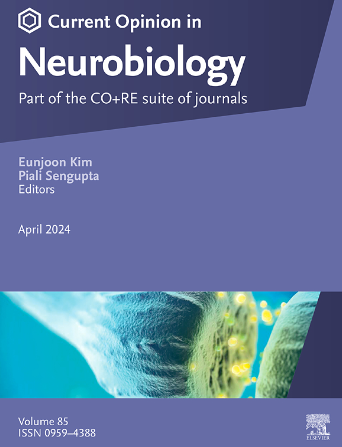访问内脏:内感受研究技术
IF 5.2
2区 医学
Q1 NEUROSCIENCES
引用次数: 0
摘要
内感受,即中枢神经系统对身体信号的感知和调节,对于维持体内平衡和行为协调至关重要。破译内感受的机制需要识别途径和解码跨脑-体轴的各种信号。这些研究是通过工具来调节和记录大脑和内脏器官的生理过程。虽然许多先进的神经技术在大脑中得到了证实,但这些技术对其他器官的应用通常有限,如胃肠道、心脏、肝脏或膀胱。在这篇综述中,我们重点介绍了在小动物体内记录和调节内脏器官生理的技术的最新进展,重点是可以在行为动物中部署的植入式生物电子器官接口。我们讨论了如何通过材料和电子技术的创新使这种接口成为可能,并概述了在拦截研究中未遇到的技术挑战。本文章由计算机程序翻译,如有差异,请以英文原文为准。
Accessing the viscera: Technologies for interoception research
Interoception, or the perception and regulation of body signals by the central nervous system, is critical for maintaining homeostasis and coordination of behaviors. Deciphering the mechanisms of interoception requires identifying pathways and decoding of diverse signals across the brain-body axis. These studies are enabled by tools to modulate and record physiological processes in the brain and visceral organs. While numerous advanced neurotechnologies are well-established in the brain, these techniques often offer limited utility for other organs, such as the gastrointestinal tract, heart, liver, or bladder. In this review, we highlight recent advances in technologies for recording and modulation of visceral organ physiology in small animals in vivo, with a focus on implantable bioelectronic organ interfaces that can be deployed in behaving animals. We discuss how such interfaces are made possible through innovations in materials and electronics and outline unmet technological challenges in interoception research.
求助全文
通过发布文献求助,成功后即可免费获取论文全文。
去求助
来源期刊

Current Opinion in Neurobiology
医学-神经科学
CiteScore
11.10
自引率
1.80%
发文量
130
审稿时长
4-8 weeks
期刊介绍:
Current Opinion in Neurobiology publishes short annotated reviews by leading experts on recent developments in the field of neurobiology. These experts write short reviews describing recent discoveries in this field (in the past 2-5 years), as well as highlighting select individual papers of particular significance.
The journal is thus an important resource allowing researchers and educators to quickly gain an overview and rich understanding of complex and current issues in the field of Neurobiology. The journal takes a unique and valuable approach in focusing each special issue around a topic of scientific and/or societal interest, and then bringing together leading international experts studying that topic, embracing diverse methodologies and perspectives.
Journal Content: The journal consists of 6 issues per year, covering 8 recurring topics every other year in the following categories:
-Neurobiology of Disease-
Neurobiology of Behavior-
Cellular Neuroscience-
Systems Neuroscience-
Developmental Neuroscience-
Neurobiology of Learning and Plasticity-
Molecular Neuroscience-
Computational Neuroscience
 求助内容:
求助内容: 应助结果提醒方式:
应助结果提醒方式:


